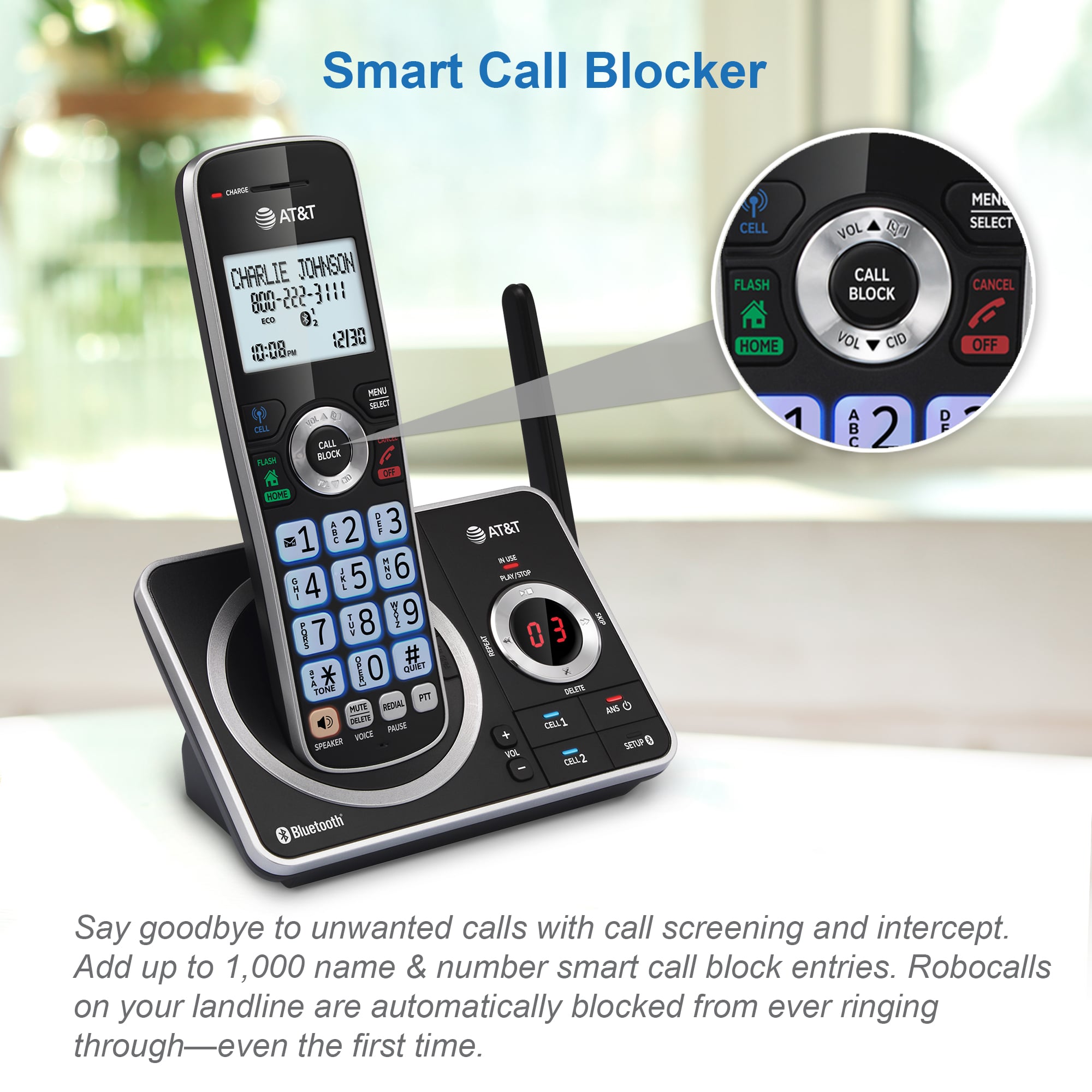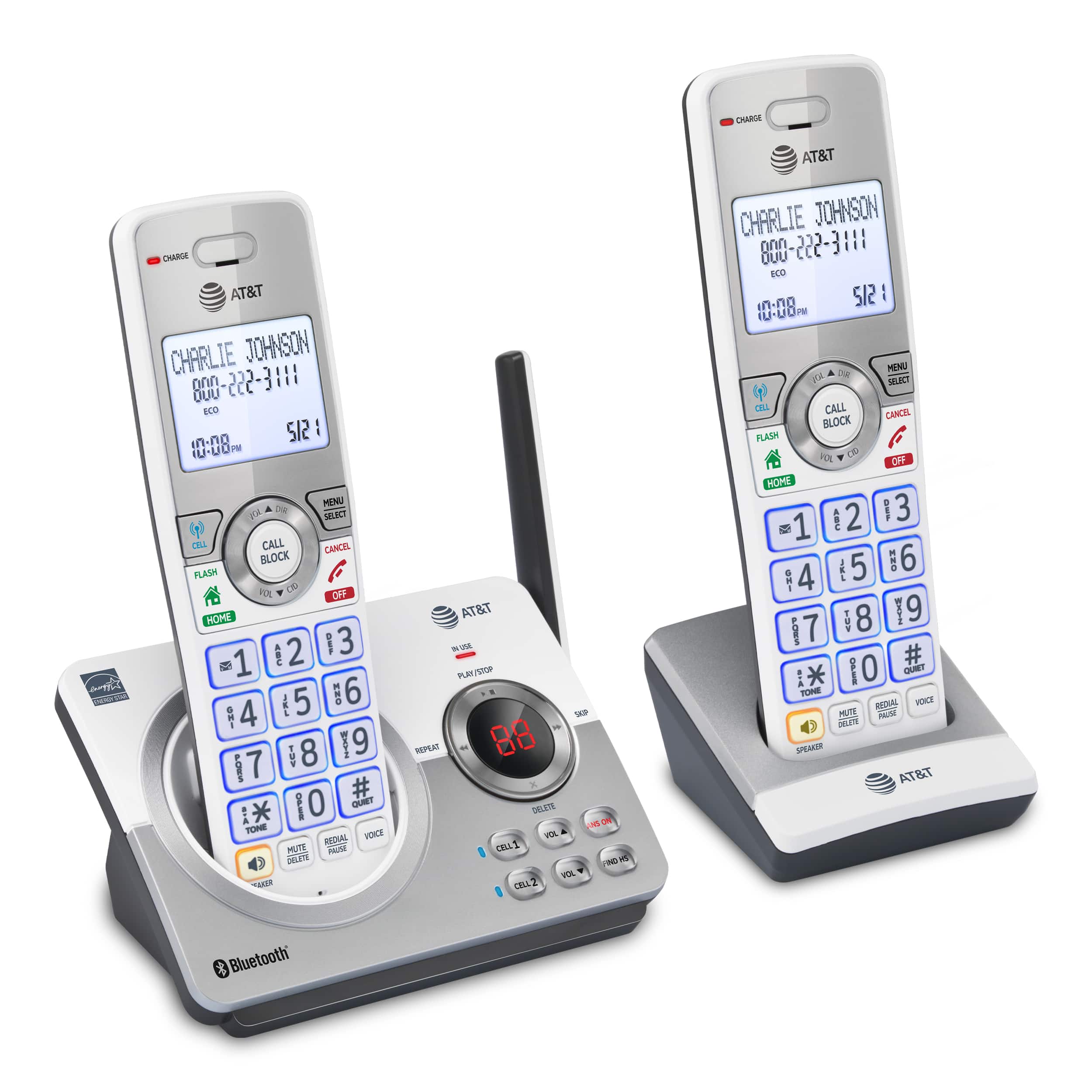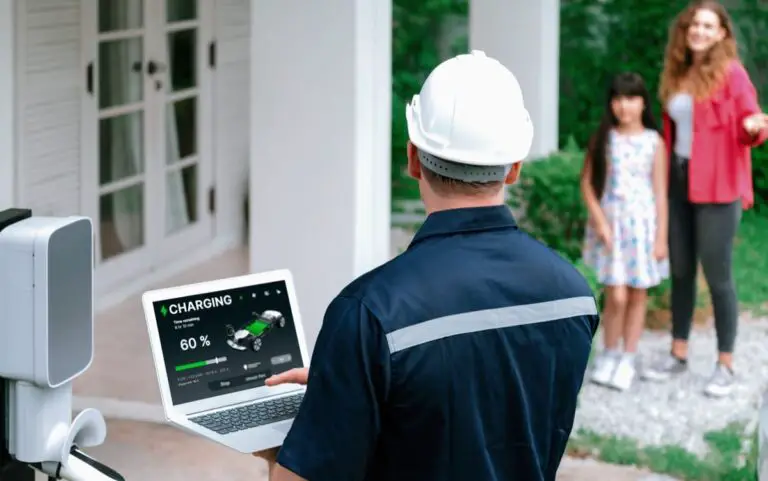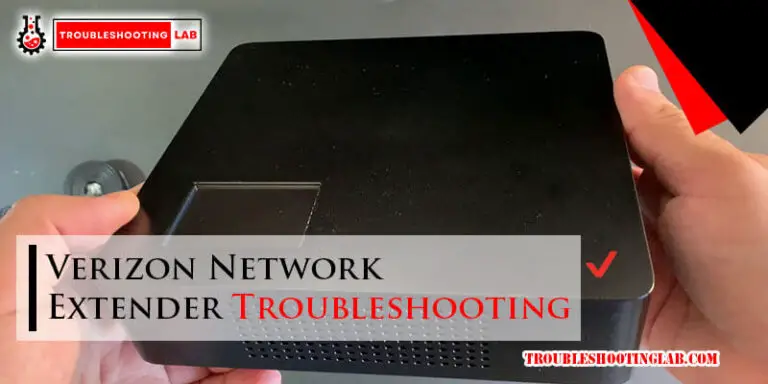AT&T Home Phone Troubleshooting: Quick Fixes Guide
Are you tired of dealing with pesky issues on your AT&T home phone? You’re not alone.
Many homeowners find themselves grappling with static, dropped calls, or other frustrating problems that disrupt their communication. But there’s good news — you don’t have to let these issues ruin your day. You’ll discover simple, step-by-step solutions to get your AT&T home phone back in top shape.
Whether you’re facing sound issues or connection problems, we’ve got you covered with tips that are easy to follow. Imagine the relief of having a clear, uninterrupted connection every time you pick up the phone. Dive in to find out how to troubleshoot your AT&T home phone like a pro, and reclaim the seamless communication you deserve. Your frustration stops here.

Common Issues
At&T home phone users often face issues like poor signal quality and static interference. Dropped calls and difficulty in connecting are common frustrations. Simple troubleshooting steps can often resolve these problems, ensuring a smoother communication experience.
When your AT&T home phone starts acting up, it can quickly turn a day upside down. Understanding the common issues can save you time and frustration. Let’s dive into some of the most frequent problems AT&T users encounter and how you can tackle them effectively.
No Dial Tone
You pick up the phone expecting to hear the familiar dial tone, but there’s silence. This can be frustrating, especially if you’re expecting an important call. First, ensure all your phone’s connections are secure—check the wall jack and the phone itself. If everything seems fine, try plugging your phone into a different jack. Sometimes, the issue is with the outlet rather than the device. Do you have a cordless phone? Make sure it’s charged or try a different handset.
Static Or Interference
Hearing static or interference during calls can make communication nearly impossible. This issue often arises from poor connections or external interference. Start by checking the cords for any damage or loose connections. Another tip is to move electronic devices away from your phone. Gadgets like microwaves can cause interference. If the problem persists, think about using a different phone to see if the issue lies with your current handset.
Dropped Calls
Dropped calls can be incredibly annoying, especially mid-conversation. This is often due to weak signals or network problems. If you have a cordless phone, ensure you’re within range of the base station. Consider moving your base station to a more central location in your home for better coverage. Have you checked the batteries? Sometimes weak batteries can also be the culprit. Are these common issues something you face regularly? Addressing them promptly not only saves time but also ensures you stay connected when it matters most.
Basic Checks
Experiencing issues with your AT&T home phone can be frustrating. Fortunately, many problems can be resolved by performing basic checks. These simple steps often fix connectivity issues, ensuring your phone runs smoothly.
Check Phone Connections
Start by examining the phone connections. Ensure each cable is firmly plugged into the correct port. Loose connections can disrupt phone signals. Check both ends of the cable to confirm they are secure.
Inspect Phone Cables
Next, inspect the phone cables for any visible damage. Look for cuts, frays, or bends in the cable. Damaged cables can affect the phone’s performance. Replacing damaged cables often restores functionality.
Verify Power Supply
Ensure the phone’s power supply is active. Check if the phone is plugged into a working power outlet. Test the outlet with another device to verify it’s operational. A stable power supply is crucial for phone operation.
Troubleshooting Tools
When your AT&T home phone isn’t working as expected, it can feel like you’re cut off from the world. But before you stress out, remember that troubleshooting tools can be your best allies. These tools can help you identify and solve issues quickly, often without needing professional help. Let’s dive into some of these tools that can turn you into a troubleshooting pro.
Line Tester Usage
Ever wondered if your phone line is the culprit behind connectivity issues? A line tester can reveal the truth. This handy device checks if there’s a signal running through your phone line. It’s like having a detective for your phone troubles. Simply connect the line tester to your phone socket and see if it indicates a signal.
If the tester shows no signal, you might be dealing with a faulty line. Imagine the relief of knowing exactly where the problem lies. You can then contact AT&T with confidence, knowing you’ve pinpointed the issue. Do you have a line tester at home, or is this tool something you’d consider investing in?
Phone Line Splitters
Phone line splitters can be lifesavers if you need to connect multiple devices to a single phone line. They allow you to split the line, enabling simultaneous connections. But what if the splitter itself is causing the problem? It’s worth checking.
Try unplugging the splitter and connect your phone directly to the wall socket. If your phone works without the splitter, you’ve found your troublemaker. A faulty splitter can disrupt your entire setup. Have you ever suspected a splitter was causing issues in your home? It might be time to test it out and see if it’s affecting your phone line.
Troubleshooting can seem daunting, but with the right tools, it’s much simpler than you think. By using line testers and checking splitters, you can tackle many common home phone problems yourself. Next time your phone acts up, consider these tools and see how they transform your troubleshooting experience.

Network And Signal Issues
Experiencing issues with AT&T home phone signals? Troubleshooting helps identify and fix network problems. Ensure connections are secure and check for service outages.
Experiencing network and signal issues with your AT&T home phone can be frustrating. These disruptions can leave you feeling disconnected, especially when you need to stay in touch with loved ones or make important calls. Understanding and resolving these issues can restore your peace of mind and ensure your home phone remains a reliable communication tool. Let’s dive into some practical troubleshooting tips.
Check Network Outages
Before you dive into complex troubleshooting, start by checking for network outages in your area. AT&T provides an online tool where you can quickly verify if there are any ongoing service interruptions. Visit the AT&T website or use their mobile app to access the network status page. Simply enter your ZIP code to see if there’s a reported outage. This simple check can save you time and frustration if the problem lies with the service provider and not your equipment.
Signal Strength Tips
Sometimes, the issue isn’t a full outage but rather weak signal strength. Here are a few tips to boost your signal: – Reposition Your Phone: Try moving your phone base to a different location in your home. Avoid placing it near metal objects or electronic devices that can interfere with the signal. – Check Cord Connections: Ensure that all phone cords are securely connected. A loose connection can cause weak signals or static noise. – Use a Cordless Phone Booster: If you have a cordless phone, consider adding a signal booster. These devices can extend the range of your phone’s signal, especially in larger homes. Have you ever noticed your phone’s signal improves when you move it closer to a window? This is because physical barriers can obstruct signals. Experiment with different positions to find the sweet spot for optimal reception. Keeping your home phone service reliable requires a bit of attention and occasional adjustments. What changes can you make today to improve your connection?
Device-specific Solutions
Troubleshoot AT&T home phone issues with device-specific solutions. Identify common problems and apply simple fixes. Enhance your call experience effortlessly.
When you’re dealing with AT&T home phone issues, finding solutions tailored to your device can save you time and frustration. Whether your setup involves a cordless or wired phone, understanding device-specific solutions can make troubleshooting more manageable. Let’s dive into the details of how to address the unique challenges each type of phone presents.
Cordless Phone Issues
Cordless phones offer the convenience of mobility, but they come with their own set of challenges. Battery life can be a common concern. Have you noticed your cordless phone dying quickly? Try replacing the batteries with new ones and see if it makes a difference. Sometimes, simply repositioning the base station to a central location in your home can improve connectivity and signal strength. Another frequent issue is static or interference. This could be caused by other electronic devices, like your Wi-Fi router. Is your router placed close to your cordless phone base? If yes, consider moving it to reduce interference. Regularly cleaning the phone and base can also help ensure clear audio quality.
Wired Phone Problems
Wired phones are generally more reliable but are not immune to problems. No dial tone can be a major issue. Before you panic, check if the phone is properly plugged into the wall jack. A loose connection can easily cause this problem. If everything is connected correctly and the issue persists, try another phone in the same jack to rule out a line issue. Crackling or noise on the line is another concern. Dust and dirt can accumulate in the phone’s handset or jack. Cleaning these areas with a soft brush can often solve the problem. If the noise continues, it might be worth contacting AT&T to check for issues on their end. Have you ever thought about how a simple reset might fix your phone issues? Unplugging the device for a few minutes can sometimes reset the connection and resolve unexplained glitches. Next time your wired phone acts up, give this quick fix a try before calling in the big guns. Finding device-specific solutions can feel like piecing together a puzzle. What has worked for you in the past? Share your experiences, and let’s help each other conquer AT&T home phone hiccups.

Advanced Troubleshooting
Advanced troubleshooting steps can solve many AT&T home phone issues. These steps go beyond basic fixes. They help when simple methods don’t work. Understanding each step is important. It ensures a smooth troubleshooting process. Let’s dive into these advanced techniques.
Resetting Phone Settings
Resetting phone settings can resolve many connectivity problems. It’s like starting fresh. Begin by accessing the settings menu. Look for ‘Reset Settings’ options. Follow the prompts to complete the process. This action will erase custom settings. It restores the phone to its default state. Be ready to reconfigure specific preferences.
Factory Reset Procedure
A factory reset is more comprehensive. It wipes all data on the phone. This process is useful for persistent issues. To start, find the ‘Factory Reset’ option in settings. Follow the instructions carefully. Confirm the reset to proceed. Remember, this will delete all saved data. Backup important information before starting.
When To Contact Support
Experiencing trouble with your AT&T home phone can be frustrating. Knowing when to contact support can save time and stress. Identifying the right moment to seek help is crucial. This section guides you on recognizing persistent issues and preparing for effective communication with support.
Identifying Persistent Issues
Minor phone issues often resolve themselves. But repeated problems indicate the need for support. Frequent dropped calls or sound distortions demand attention. Static noise that persists despite basic checks is a concern. If the phone fails to connect regularly, it’s time to contact support. Unresolved issues after trying basic fixes are a strong signal.
Gathering Information For Support
Before contacting support, gather important details. Note the type of issue you’re facing. Record the frequency and times these problems occur. Check if the phone works with other devices. Make a list of any error messages received. Document steps already taken to resolve the issue. Having this information ready speeds up the support process.
Frequently Asked Questions
How Do I Reset My At&t Home Phone?
To reset, unplug the phone. Wait 30 seconds. Plug it back in. Check for dial tone.
Why Is My At&t Phone Not Ringing?
Check if the ringer is off. Make sure volume is up. Ensure the phone is plugged in.
What Should I Do If There’s No Dial Tone?
Ensure all cords are connected. Test with another phone. Contact support if issue persists.
How Can I Fix Static On My At&t Phone?
Check for loose wires. Move devices causing interference. Ensure phone is away from electronics.
Why Are Calls Dropping On My Home Phone?
Check signal strength. Ensure phone is charged. If persistent, contact AT&T for further assistance.
Conclusion
Fixing AT&T home phone issues can be simple with the right steps. Stay patient and check each solution carefully. Most problems have easy fixes, like loose wires or settings errors. Use this guide to solve common issues quickly. Remember, support is available if problems persist.
Reaching out for help is okay. Keep your phone running smoothly and enjoy clear conversations. A little effort goes a long way in maintaining your connection. Stay connected and worry-free with these troubleshooting tips. Your home phone can work perfectly again.
Just follow these steps and enjoy a hassle-free experience.






